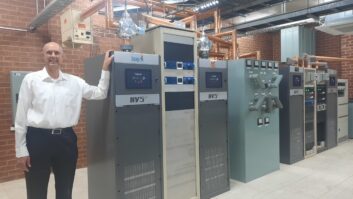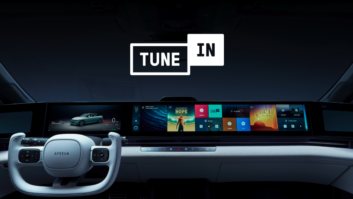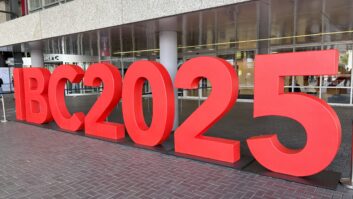Emergency Warning Systems Pty Ltd. is an Australian company that has developed an emergency warning system to deliver emergency messages to people through their car or home radio. Its technology searches for and finds every station operating in an area and broadcasts the message in the target zone on all stations. When activated, it overrides normal radio broadcasts to transmit the warning message or alert tone on FM bands (with AM planned). The system has an optional Radio Data Systems (RDS) feature that offers the ability to broadcast warnings by switching over from the CD player or iPod/MP3 player on an RDS-compatible radio.

Seeking to learn more, Radio World emailed Geoff Drucker, the company’s director.
Who owns the company; where is it based; how many employees?
The company currently has five employees and 48 shareholders. It is based in Melbourne, Victoria. Deployments of the technology are managed through suppliers and contractors. With global interest in the technology we cannot have teams in different countries — it is far more efficient to partner with appropriate organisations in each country.
How does your technology work?
EWS’ patented technology is designed to save lives in emergencies by broadcasting a radio message saying what to do, when to do it and how. It searches for and finds every radio station operating in an area. It then broadcasts the emergency message in the target zone on all stations to ensure that anyone listening to any radio station in the zone will get the message to take the appropriate action to protect lives and property.
The technology determined the power of each frequency in a target zone and determines what level of power is required to over-ride each frequency in order for the emergency message to reach all in the target zone.

Geoff Drucker
Are you actively trying to break into the U.S. market? What methods are you pursuing to do so?
The U.S. is not on our radar at the moment due to the level of interest in Australia. However from media reports about warning systems used in the U.S., it will become an extremely important market for us very soon, we imagine. We see that many towns and cities use sirens and public address systems. Our technology is far superior and impacting to these systems.
Who is your customer? Presumably it is a public safety or government organization?
Our customers are governments, emergency services organisations, city councils, the military, companies conducting roadworks and mining companies.
What regulatory issues does this present?
In Australia we need to secure support from radio broadcasters and the Australian Communications and Media Authority. It is critical for us to have broadcaster support because they effectively own the frequency that we will be interrupting. If a broadcaster prohibited us from using their frequency, we can easily eliminate it from the broadcast. We would advise people in the target zone that they will not get any emergency messages on that particular station.
The concept of “seizing” or overriding radio channels seems likely to be contentious for broadcasters, even for a service aimed at emergency situations. What do broadcasters say? How do you overcome that presumed obstacle? What are Australian radio operators saying about this?
For deployments to date, we have sought approval from radio broadcasters. They have been most supportive because they do not want to stand in the way of lives and property being saved. They are particularly encouraged by the fact that our technology only reaches people at risk, it is not a jamming device nor does it blanket the entire broadcast area of a radio station. Our broadcasts typically have been short range to 1 mile, so we are only impacting on a small proportion of a station’s listening audience. We can however broadcast further if required by the authorities.
Some radio stations also welcome our system because during an emergency it drives people to their frequency for information and away from CDs, iPods and MP3 players.
We’ve seen systems proposed in the U.S. that would allow emergency responders to broadcast a “move out of the way” message over nearby car radios; but they’ve not succeeded. Thoughts on why, and how that affects your system?
I am not sure why they failed. We conducted an extensive trial in Sweden that was independently evaluated and the results were extremely positive in terms of making drivers respond appropriately. We have extensive documentation on that trial and it generated significant media attention.
Your marketing material emphasizes that the system uses “narrow broadcast ability” and is not a “jammer.” Why is that important?
This is the key to our technology because we can manage the reach of the message. Broadcasters do not want a message to reach those who are not at risk, but they are happy to play a role in reaching those in danger. Our technology is able to target only those at risk, such as people on a road, in a township or at a disaster-prone location.

Technical overview of the EWS system
What is the Personal EWS?
This device can have multiple frequencies to allow broadcasts in different languages. It is a permanent fixture in a home or office, or even a car (which is what the UAE is considering). The size of a smoke detector, it has its own frequencies to which a message is broadcast from one of our units. Again the message is targeted to those at risk advising what to do, when and how.
What else should radio broadcasters know?
The key things for broadcasters to know are:
- • The overbroadcast zone is limited to those at risk, so people who are outside that zone will not hear the message
- • The impact on advertisers is minimal because the broadcast reach is limited
- • The length of messages can be selected as can the interval of broadcast — different situations require different message timing and length
- • The technology will drive people to radio stations because people want to know what is happening in an emergency
- • Emergency services organisations will promote radio station brands, those supporting the technology
- • Radio stations can play a critical role in people and asset management in an emergency
- • Everyone has access to a radio







